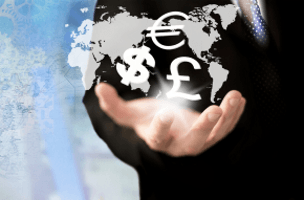Forex traders must be skilled, disciplined, and sufficiently capitalized to survive and prosper in the world’s largest and most liquid marketplace. Similar traits are required to trade financial instruments profitably on Contracts for Difference (CFD) platforms.
CFD and Forex Currency Trading Similarities
- Both have friendly web-based trade execution processes and are characterized by limitless liquidity. Markets never freeze-up and trades can be initiated whenever they are open, close to the last-price trade.
- Analytic tools — Basic charting and technical factors are influence both. Forex news is of paramount importance also in understanding CFD price movements.
- Account margin requirements — In both cases, margin balances are highly leveraged and small price movements in the underlying assets have extremely magnified effects on position balances, requiring close attention during market hours. Thus both cases are abstractions from underlying assets with no ownership features. Account balance changes are settled for cash
- Market-maker spread-based revenue model — For CFDs, an overnight fee is assessed on open positions and for forex, depending on the channel and market participants, minimal transaction and financial fees are assessed. But in both, the primary source of income is the buy – sell spread (or premium) on each transaction. The spread is denominated in pips, usually thousandths of a unit. It can be variable or fixed and is often based on a number of factors, including the currency pair
- Stability and Viability of Counter-Trade Offerer — In any financial relationship, a trader must concern himself with the opposing party financial stability, its: capitalization, length in business, management experience, network contacts, volume of business, safety of client capital, variety of offered trades and stop orders.
CFD and Forex Currency Trading Differences
For the forex trader, the key difference from trading in CFDs is the increased variety of instruments classes beyond the proprietary CFD platforms compared with the increased CFD instrument types. By this we mean that forex encompasses instruments which are both existing and future assets as well as real and wasting (options), whereas CFDs also relate to non-forex instruments, like shares, indices, and commodities. So, in general, CFD traders have a broader scope of interest beyond forex news. While any significant macro-economic development is part of the forex news cycle and therefore of concern to forex traders, the broad flow of information often affects other instrument classes more directly.
The essence of forex training
Managing risks and rewards is the major issue in forex training. The effort consists largely of using stops and limits wherever possible. Only in this manner can a trader hope to overcome the inherent bias against the small trader that institutions with unlimited computing and communication power possess.
- Stop Loss — Limits the risk on an existing position, closing it when the price moves adversely.
- Trailing Stop — Also limiting existing position risk, but it is set at a fixed distance, in pips, from the current market and “follows” the market as it moves in your favor
- Entry Stop — Opening a position if the market moves in an anticipated direction; An Entry “Buy Stop” is an order to buy above the current market, and an Entry “Sell Stop” is an order to sell below the current market.
- Take Profit Order — An order which will incur profits on an established position. It closes a position at a price set by you when the market moves to your benefit. If you have a long position, the Take Profit order is above the current price. If you have a short position, the Take Profit order will be below the current price.
- Limit Order — Orders designed to open a new position at a better price than the existing one. An Buy Limit is an order to buy at less than the current price, and an Sell Limit is an order to sell at greater than current price.





